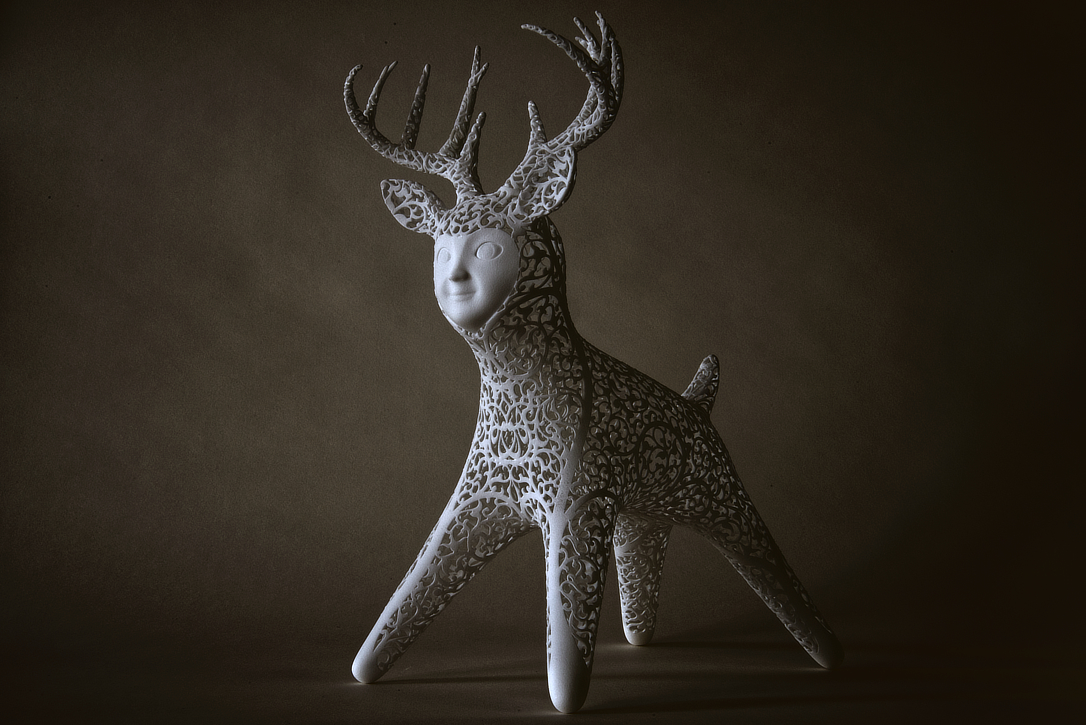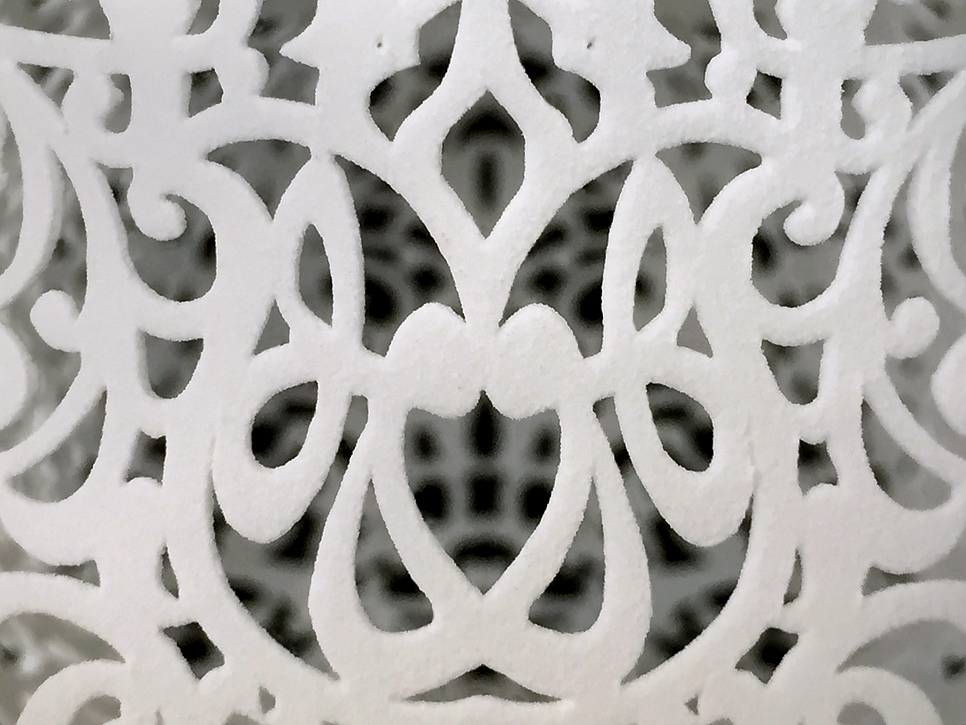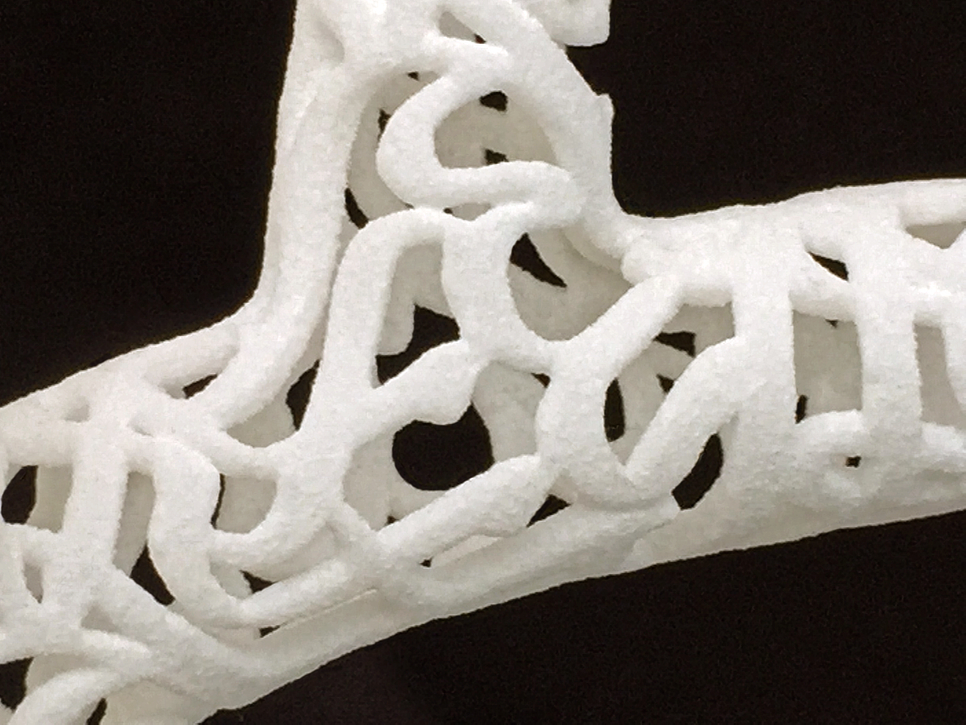Ah-who
“What did your face look like before your parents were born?” – Zen Koan
Ah-who evokes the magical world of Persian myth and folklore. Inspired by classical Persian art, poetry, and philosophy, this sculptural work blends arabesque patterns, stylized calligraphy, and the form of a deer — Ah-hu in Persian — to explore the mystery of being. Measuring 12” tall, 10” long, and 6” wide, the piece fuses the body of a deer with the face of a human, rendered in intricate filigree and calligraphic symbols.
The chest bears the word Hu (“that which is Real”), while the antlers read Reality is One — illusion many. Together they suggest a meditation on unity, transformation, and the tension between the seen and the unseen. Like mythical hybrids such as the Sphinx or Qilin, Ah-who symbolizes the merging of worlds — human and animal, material and spiritual — as a metaphor for the unity of existence.
Through this poetic fusion, the work asks timeless questions: What defines a human being? What lies beyond appearances? What is our original, unchanging face? The filigree arabesque pattern, with its endless flow of lines, evokes the eternal continuity of creation, while the solid human face anchors the viewer in the Real — the unchanging essence that gives rise to all forms.
Ah-who is both sculpture and contemplation — a meditation on identity, perception, and the deeper layers of being.





